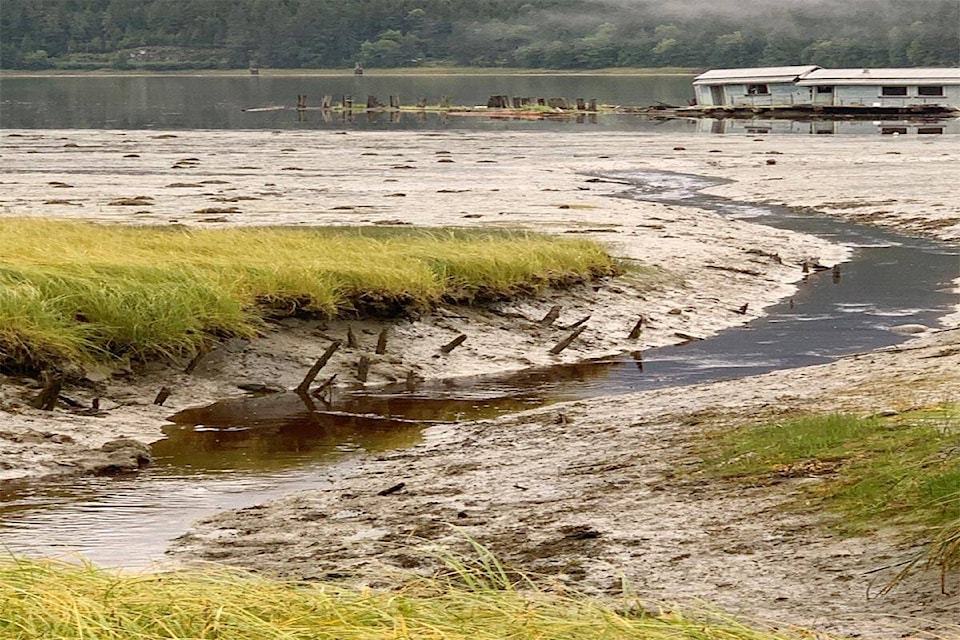A historic discovery of fishing weirs at Minette Bay shows the Haisla Nation has actively gathered fish along the channel’s shores for more than 1,800 years, essentially cementing Haisla lineage claims in the area.
“This is quite historical for our nation because we don’t have a modern-day treaty with the province and the federal government,” Haisla Nation Councillor Brenda Duncan said. “We have always maintained we have a strength of claim but this finally strengthened that beyond measure.”
As contractors were developing a marine habitat offset program, they discovered old fishing weirs along the shoreline channels. Stopping the construction, a consulting company was hired to take a look at the archeological site, where they collected data and discovered the age of the weirs.
READ MORE: Haisla Nation approves partnership for Cedar LNG project
Haisla Nation Council hosted a blessing ceremony for their recently discovered fishing weirs.
Traditionally built from wood or stone, fishing weirs use two fence-like barriers to form a ‘V’ shape that funnels fish into a trap.
The Haisla government is excited to have proof of a common connection to the land with their ancestors.
“My fellow councillor shared that even he and his father-in-law did the same act of pounding those wooden stakes to help them fish with eulachons. That’s in our era, our time, and to be able to tie those two together is phenomenal,” Councillor Margaret Grant said.
The historical documentation of the fishing sites began a few years ago when archeologists came to Haisla. They searched the channels and found old wooden stakes that were used for weir fishing.
The stakes were then shipped to Beta Analytic Testing Laboratory, where they received Accelerator Mass Spectrometry (AMS) testing to find out their age.
“With every piece coming out of the ground [we built] a data set which translates into a story we can tell that’s been going on for so long in Minette Bay,” said Travis Freeland, archaeologist and field supervisor of Kleanza Consulting Ltd.
Radiocarbon dating placed the wooden stakes at 1,800 years old, providing strong evidence the Haisla people had occupied the Minette Bay area for at least that long.
READ MORE: Haisla Nation Council continues work-from-home orders for beginning of new year
Because Haisla stories and traditions are passed down verbally, this physical evidence of ancestral lineage is especially significant.
“What was told to us was something that all our people knew, but we didn’t have the proof, but now we have the proof,” Councillor Willard Grant said.
Haisla Environment Manager Candice Wilson added, “so now that we have this physical, tangible evidence that you can actually go see and touch, it’s a gateway into our history.”
To view a short documentary on the archaeological finding, visit haisla.ca/a-key-link-to-the-haisla-past/.
